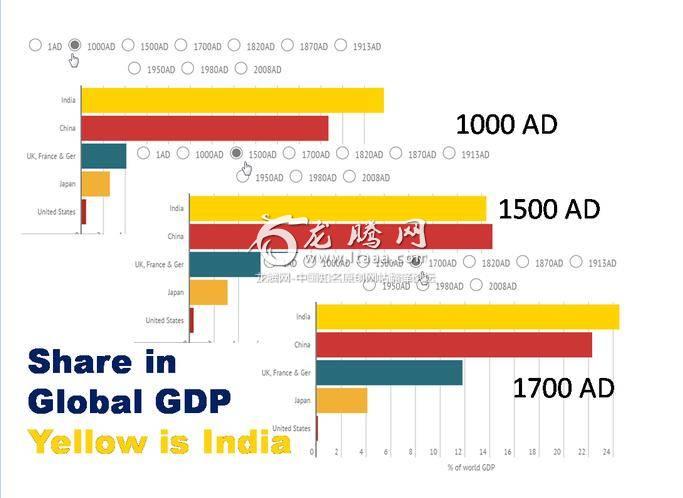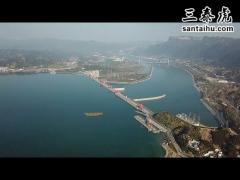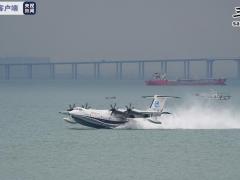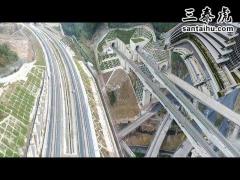有哪些过去强大但如今已经不再强大的国家?(二) [美国媒体]
quora网友:东印度公司时代(1793年至1857年):印度的国内生产总值为中国国内生产总值的40%。印度错过了工业革命,它在进一步地滑落。英国统治时期(1860-1947):1952年,印度经济占世界总收入的3.8%。在17世纪之前,这个小国家(土地面积仅为地球总面积的1.92%)在全球财富中所占的份额都超过了25%......
Which countries were powerful in the past but no longer are?
有哪些过去强大但如今已经不再强大的国家?
回答四:
Chintan Rajani, Chief Accountant (2017-present)
Updated Feb 14
It has to be India.
India is the oldest civilization in the world. Spirituality seeps into every facet of Indian life; and down through the ages, India has sent forth the message of peace, love and truth. India’s national flag with its tricolor of deep saffron, white and green clearly conveys India’s commitment and adherence to spiritual values.
For the last 4000 years despite invasions, persecution, European Colonialism and political upheaval, the spiritual and social structures that define India’s identity have remained intact.
The word “Hindu” comes from the name of the river Indus, which flows 1800 miles from Tibet through Kashmir and Pakistan to the sea. Originally the word “Hindu” was the name that the ancient Persians used to apply to the river Sindhu. Whenever in Sanskrit there is an s in ancient Persian it changes into h, so that Sindhu became Hindu. This word Hindu referred to people living on the other side of the river Indus, regardless of their faith.
Historically, the Indus valley civilization (3000 BC to 1500BC) is considered the first civilization in India. This was followed by the Vedic period (1500BC to 500 BC). The Mauryan Empire is the first Indian empire. The Gupta, Pratihara, Pala, Chalukya, Chola, Pandya dynasties followed this. The Muslim period was established in the 9th century and was followed by the arrival of Europeans, mostly British in the 17th century. India attained independence on August 15, 1947.
India was known as Sone ki Chidiya (Golden Sparrow).
The Indian economy flourished on solid business practices and state of art economic principles of that time. It laid the foundation for India to become the world’s largest economy for long time to come.
必须是印度。
印度是世界上最古老的文明。文明的精神渗透到了印度生活的方方面面;在过去的岁月里,印度发出了和平、爱和真理的信号。印度国旗中的三色——深藏红色、白色和绿色清楚地传达了印度的承诺和对精神价值的坚持。
在过去的4000年里,尽管历经了侵略、迫害、欧洲殖民主义和政治动荡,定义印度身份的精神和社会结构仍然完好无损。
“印度”这个词源于印度河,这条长达1800英里的河流发源于西藏,流经了克什米尔和巴基斯坦,最后注入海中。最初,“印度”一词是古代波斯人称呼印度河的名称,它原来的拼法是“Sindhu”。但是在梵文中,古波斯语中的s变成了h,所以Sindhu变成了Hindu。这个词后来指的是生活在印度河另一边的人,不管他们的信仰是什么。
历史上,印度河文明(公元前3000年到公元前1500年)被认为是印度的第一个文明。随后是吠陀时期(公元前1500年至公元前500年)。孔雀王朝是第一个印度帝国。紧随其后的则是笈多王朝、波罗提诃罗王朝、帕拉王朝、遮娄其王朝、朱罗王朝、潘地亚王朝。穆斯林时期是从9世纪开始的,随后则是欧洲人的到来,其中大多是17世纪的英国人。印度于1947年8月15日获得独立。
印度被称为金雀。
印度经济在当代可靠的商业实践和最顶级的经济原则的基础上得到了蓬勃发展。它为印度在未来很长一段时间内成为全世界最大的经济体奠定了基础。
The following is the position of India in world economy for various time periods after 1 A.D.:
Pre Mughal Rule (1AD – 1500AD): India was the world’s largest economy during the years 1 AD and 1000 AD. In 1500 AD India’s economy had a 24.5% share of world income, the second largest in the world after China, which had a 25% share.
Mughal Rule (1570-1793): India’s momentum continues. In 1600 AD, India’s income of ?17.5 million was greater than the entire treasury of Great Britain in 1800, which totalled ?16 million. Perceptible decline starts after 1700.
East India Company era (1793-1857): India GDP becomes 40% of China’s GDP. India missed industrial revolution and it slipped further.
The British Raj (1860-1947): India’s economy had a 3.8% share of world income in 1952.
Until as late as the 17th century AD (land wise just 1.92% of Earth), this small nation’s share in global wealth was more than 25%.
以下是印度在公元1年以后的世界经济中所处的位置:
莫卧儿王朝之前的的时期(公元元年至1500年):在公元元年和公元1000年,印度都是世界上最大的经济体。在1500年,印度的经济占世界收入比重的24.5%,是全世界仅次于中国的第二大经济体,占有25%的份额。
莫卧儿王朝统治时期(1570年至1793年):印度的发展势头还在继续。在公元1600年,印度的收入为17500万英镑,超过了1800年的整个英国国库财富,后者总共为1600万英镑。而可察觉的衰退则始于1700年之后。
东印度公司时代(1793年至1857年):印度的国内生产总值为中国国内生产总值的40%。印度错过了工业革命,它在进一步地滑落。
英国统治时期(1860-1947):1952年,印度经济占世界总收入的3.8%。
在17世纪之前,这个小国家(土地面积仅为地球总面积的1.92%)在全球财富中所占的份额都超过了25%。
Because of the highest concentration of arable land which was developed by shear labour of 2000 generations of our ancestors this less than 2% earth mass and more than quarter of world's wealth; India got the nickname of Sone Ki Chidiya.
Now here we have to see the map to understand what the situation just 30 generations ago from today was; by it, we can easily contemplate that present day Africa, Australia and the Americas all together were contributing just 34% towards the global wealth.
The ancient India looked like this:
因为我们之前两千多代的祖先通过辛勤劳作开垦出来的高度集中的耕地,我们这片不到地球表面积2%的土地上出产了超过全球四分之一的财富;印度因此获得了“金雀”的绰号。
现在我们要看看地图,来理解30代人之前的情况是怎样的;通过它,我们可以很容易地想到,现在的非洲、澳大利亚和美洲在过去总共贡献了全球财富的34%。
古印度是这样的:
It included present India, Afghanistan, Pakistan, Sri Lanka, Nepal, Bangladesh, Myanmar, Tibet, Bhutan, the Maldives and Indonesia. You can still find ancient Hinduism in Indonesia. It would be the largest after Russia in terms of land mass.
Today’s India is poverty-stricken. But tomorrow’s India will be prosperous. She will be a mighty wave of hope and faith. Her very thought will be stirred with a new vision. Infinite will be the possibilities on her horizon. Her sacrifice will build a more durable foundation for mankind. She will continue within herself nationalism and internationalism, becoming the true symbol of spirituality in action.
India, with her spiritual power, will wield a tremendous influence on the future generations. This is no imagination, but vision in operation.
– Sri Chinmoy
其中包括印度、阿富汗、巴基斯坦、斯里兰卡、尼泊尔、孟加拉国、缅甸、西藏、不丹、马尔代夫和印度尼西亚。你仍然可以在印度尼西亚找到古印度教。这将是继俄罗斯之后拥有最大陆地面积的国家。
今天的印度是贫困的。但明天的印度将会获得繁荣。它将抱有巨大的希望和信念。它的思想将会被一个新的愿景所激发。无限将是它的地平线上的可能性。它的牺牲将为人类建立一个更加持久的基础。她将继续在自己的民族主义和国际主义框架内成为行动精神的真正象征。
拥有精神力量的印度将对未来的几代人产生巨大的影响。这不是臆想,而是行动的愿景。
——钦莫伊
回答五:
Kyle Andrushak
Answered Apr 19
I’d have to say The Papal States.
Way back before the nation of Italy came around, the region was broken up into multiple smaller powers. Venice, Sardinia, Tuscany, Sicily, Genoa, and a nation ruled by the Pope himself, the Papal States. This nation controlled a large portion of Central Italy, including Rome itself.
So what happened to it? Well, it still exists today. We call it the Vatican City.
In the span of less than 100 years, the Papal State went from being a regional power in Europe and controlling one of the richest parts of Italy to being the smallest country on Earth in terms of both size and population. It’s the only country that is itself enclosed within a larger city - Rome. It continues to exist largely as a formality, and any influence it has on the world stage comes not from any sort of economic or military power, but because it simply happens to be where the Pope lives.
If it wasn’t for Frank over here, the Vatican would have nothing but a few really nice churches with some very well decorated ceilings.
So there’s my pick for the country with the furthest fall from grace. The Papal States/Vatican City.
我不得不说说教皇国。
早在意大利民族国家出现之前,该地区就被分割成了多个较小的国家。威尼斯,撒丁,托斯卡纳,西西里,热那亚,还有一个由教皇本人统治的国家——教皇国。这个国家控制了意大利中部的大部分地区,包括罗马本身。
那么到底发生了什么?今天,它仍然存在着。我们称它为梵蒂冈城。
在不到100年的时间里,教皇国从欧洲的一个控制着意大利最富有区域的地区强国变成了世界上最小的国家——无论是在规模上还是在人口上。它是唯一一个被一个更大的城市——罗马——包围的国家。它继续保持着一种仪式性的存在,它在世界舞台上的任何影响力都不是来自任何形式的经济或军事力量,而是因为它恰好是教皇生活的地方。
如果不是教皇生活在这里,梵蒂冈除了一些非常漂亮的教堂以及一些装饰得很好的天花板之外,就一无是处了。
因此,我选择的国家是这个距离神恩最远的国家——教皇国梵蒂冈城。
回答六:
Kwena Makgamatha, B.A. Communication Studies & Media Studies, University of Limpopo (2018)
Answered Feb 7
Ever heard of the Mali Empire?
It’s the country where the richest man in recorded history lived; the place where one of the oldest universities in the world was built. During those times, it was the center of education, religion, international trade and mining. It was basically, by far, the most powerful African country and it was also far more advanced and powerful than most nations outside of Africa.
有人听说过马里帝国吗?
这里是历史上最富有的人居住的国家;这里是世界上最古老的大学之一的所在地。在这一时期,它是教育、宗教、国际贸易和采矿的中心。到目前为止,它基本上算是非洲曾经出现过的最强大的国家,而且它比当时非洲以外的大多数国家都要先进和强大。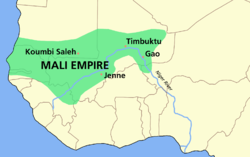
Well this is Mali now:
这是现在的马里: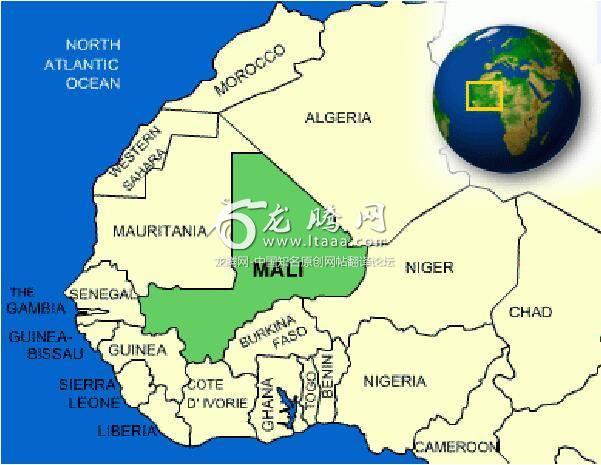
It might look bigger than it was back then but it’s now far poorer and weaker than it was back then. It’s one of the poorest nations in Africa and has absolutely no military force capable of maintaining public safety and eliminating widespread Islamic terrorism. The civilian infrastructure is also one of the most basic in the world for a 21st century nation.
它可能看起来比当时更大,但现在它比那个时候要穷得多,也更加弱小。它是非洲最贫穷的国家之一,绝对没有任何军事力量能够维护公共安全和消除普遍存在的伊斯兰恐怖主义。民用基础设施也是21世纪所有国家中最落后的。
回答七:
Nathan Land, Silver-Tongued Storyteller
Updated Apr 4
The Netherlands.
尼德兰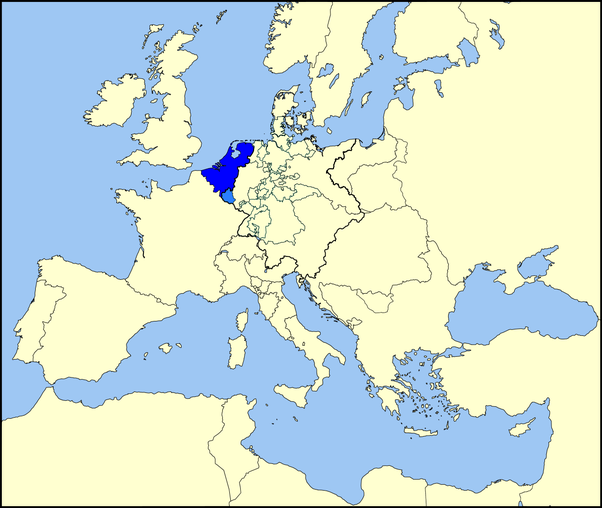
Now, the Netherlands weren’t powerful in the conventional sense of the term - as you can see, they are a rather small country, situated West of Germany and North-East of France. One would expect such a country to be eaten by their neighbours.
Militarily, the Dutch weren’t up to the standard of the rest of Europe.
However, economically, they were certainly capable of competing with many of the other countries on the continent. With the opening of many ports, they managed to get a firm grasp on naval trade. In fact, the Dutch adopted mercantilism, an economic philosophy focused on the accumulation of material wealth due to the belief that there was a limited amount of it in the world.
After mercantilism, they adopted capitalism, which was varied to mercantilism in the idea that wealth could be created - the former believed this, whilst mercantilism didn’t allow room for the creation of new wealth.
The Dutch were master traders.
Over time, as the world has changed, not to mention the World Wars, the Dutch have fallen into a back seat in Europe, but they once were one of the most powerful countries on the continent.
Some people in the comments have pointed out that Belgium is part of the dark blue. That map isn’t contemporary - Belgium was once part of the country that we call the Netherlands.
现在的荷兰按照传统意义来说并不强大——正如你所看到的,它是一个相当小的国家,位于德国的西部和法国的东北部。人们认为这样的国家是会被邻国吞并掉的。
在军事上,荷兰人也没有达到欧洲其他国家的标准。
然而,在经济上,它却完全有能力与这个大陆的其他许多国家竞争。随着许多港口的开放,它成功地掌握了海上贸易。事实上,荷兰采用了重商主义政策,这是一种专注于物质财富积累的经济哲学,因为它相信世界上的物质财富是有限的。
在重商主义之后,他们采用了资本主义——不同于重商主义的是,资本主义认为财富可以被创造出来——它相信这一点,而重商主义则没有允许新的财富被创造出来的空间。
荷兰人是大师级的商人。
随着时间的推移,随着世界上发生的变化,更不用提世界大战了,荷兰在欧洲已经退居次要地位,但它曾经是欧洲大陆上最强大的国家之一。
一些人在评论中指出,比利时是深蓝色的一部分。那张地图不是当代的——比利时曾经是我们所说的荷兰的一部分。
回答八:
Sourin Paturi, History Bee Finalist
Answered Apr 5
The Swedish Empire
瑞典帝国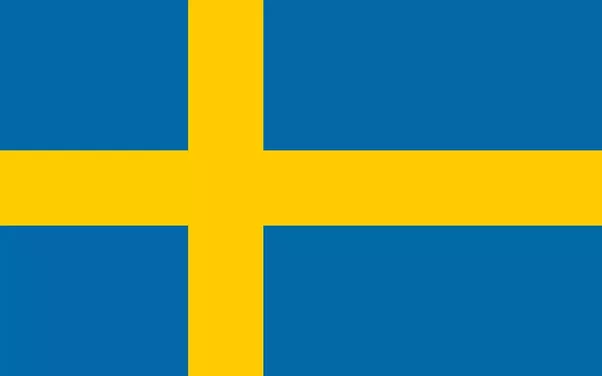
The Swedish Empire was a short reigned imperial version of Sweden that existed from around the 17th to 18th centuries. It was often a force to be reckoned with and held supremacy over the Baltic Sea with its naval capabilities. The empire expanded and began with Gustavus Adolphus in 1611 and was eventually lost its great power status in the Great Northern War. It was comparable to the other major European nations such as France, Britain and Russia at the time
瑞典帝国是一个短命的帝国,它存在于17世纪到18世纪。它是一股不可忽视的力量,它拥有强大的海军力量,在波罗的海拥有至高无上的地位。这个帝国的扩张由古斯塔夫·阿道夫于1611年开启,但最终,它在大北方战争中失去了它的强大地位。它与当时的法国、英国和俄罗斯等其他主要欧洲国家是相匹敌的。
At its height the Swedish Empire controlled much of Scandinavia, the Baltic States and various regions in Northern Germany. Surprisingly it had a vast influence past Europe itself and had some early colonies in North America that were short lived. It also had some influence in the African continent with numerous outposts in the Gold Coast.
在其鼎盛时期,瑞典帝国控制了斯堪的纳维亚半岛的大部分地区、波罗的国家以及日耳曼北部的各个地区。令人惊讶的是,它对欧洲自身产生了巨大的影响,并在北美建立了一些早期的殖民地。它在非洲大陆也有一些影响力,在黄金海岸建立了许多前哨。
It fell by 1709 with the Battle of Poltava and its territory being partitioned by Russia and several other countries.
1709年,随着在波尔塔瓦战役中的战败,它的领土被俄罗斯和其他几个国家瓜分。
回答九:
Dylan Owens, I’ve written, I’m writing, and I’ll write.
Updated Mar 15
A lot of people don’t know it, but Spain used to be a global superpower.
很多人都不知道西班牙曾经是一个全球超级大国。
They controlled most of what’s now the US, all of Mexico and Central America, and half of South America. They also controlled the Philippines, some of Italy, and a whole slew of little islands. They were also given a small part of Africa at the Berlin Conference.
In the 16th and 17th Century, Spain was the most powerful empire on Earth. Their navy took a hit when the Spanish Armada was defeated trying to take over England, but they were still very powerful. For 200 years the Spanish Empire was the global superpower. Their massive amount of land in the New World made them rich with gold and silver.
They fought the British Empire several times, and even destroyed the largest British fleet ever assembled other than the battle of Normandy.
They were a big deal. They were wealthy, powerful and influential.
在16和17世纪,西班牙是地球上最强大的帝国。当西班牙无敌舰队在试图占领英格兰时被击败后,他们的海军受到了打击,但他们仍然非常强大。200年来,西班牙帝国一直是全球超级大国。他们在新大陆所拥有的大量土地给他们带来了大量的黄金和白银。
他们曾数次与大英帝国作战,甚至摧毁了除诺曼底战役之外英国有史以来组织起来的最大规模的舰队。
它是一个举足轻重的国家。它富有、强大,并且很有影响力。
Their power started waning when they got into a bunch of wars with Britain and France over control of land in the New World. They began losing large amounts of money in Spain, and losing huge amounts of land to the French.
When the French General Napoleon Bonaparte occupied Spain during the war, Spanish colonies began revolting all around the world.
Almost all of their colonies had gained independence by 1820. They sent in troops to regain control, but they were driven out. The colonies also gained economic independence, which was a huge blow. They held on to Puerto Rico, Cuba, and the Philippines.
In 1898, Spain got into a war the US. They lost the war, and lost the Philippines, Cuba, and Puerto Rico. The Spanish Empire was pretty much over.
These days, Spain isn’t anything special. They’re just kind of that one Spanish country. Even though they’re pretty lackluster today, they used to be one of the largest empires on Earth.
当他们与英国和法国在新世界的土地控制问题上爆发了一场战争时,他们的力量开始被削弱。他们开始在西班牙付出大量赔款,并且割让了大片的土地给法国人。
当法国将军拿破仑·波拿巴在战争中占领西班牙时,西班牙在世界各地的殖民地开始造反了。
到1820年,几乎所有的殖民地都获得了独立。西班牙曾派遣军队,试图重新控制这些地区,但他们被赶了出去。殖民地也获得了经济上的独立,这是一个巨大的打击。不过他们继续控制着波多黎各、古巴和菲律宾。
1898年,西班牙卷入了与美国的战争。他们输掉了战争,丢失了菲律宾、古巴和波多黎各。西班牙帝国已经差不多完蛋了。
如今,西班牙并不是什么特别的国家。他们只是一个西班牙人的国家。尽管它今天很路人,但它曾经是地球上最大的帝国之一。
版权声明
我们致力于传递世界各地老百姓最真实、最直接、最详尽的对中国的看法
【版权与免责声明】如发现内容存在版权问题,烦请提供相关信息发邮件,
我们将及时沟通与处理。本站内容除非来源注明五毛网,否则均为网友转载,涉及言论、版权与本站无关。
本文仅代表作者观点,不代表本站立场。
本文来自网络,如有侵权及时联系本网站。
图文文章RECOMMEND
热门文章HOT NEWS
-
1
Why do most people who have a positive view of China have been to ...
- 2
- 3
- 4
- 5
- 6
- 7
- 8
- 9
- 10
推荐文章HOT NEWS
-
1
Why do most people who have a positive view of China have been to ...
- 2
- 3
- 4
- 5
- 6
- 7
- 8
- 9
- 10
